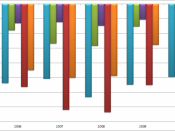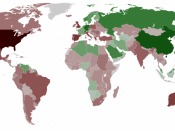Introduction
The balance of payments current account is one of popular indicators of a country's economic health. "Current account deficit means an excess of imports over exports of goods, services, investment income, and unilateral transfer (Carbaugh, 2002, p.350)."Although Australia's current account deficit has exceeded about 3 percent of GDP for about 20 consecutive years (Sighvatsson, 2001), there has not been that a big current account deficit problem. Mexico had a current account deficit which became a big problem to the country because there was a large debts service payment relative to GDP. This problem led Mexico to the economy collapsed at the end of 1994. As a result, about 20000 small and medium-sized enterprises declared bankruptcy, two million people lost their jobs, the real wage declined (The Development Gap, 1998). Running current account deficit was also a big problem in Thailand. This is because there was a huge capital inflow at that time while Thai used the fixed exchange rate and tried to defend the currency.
Moreover, some of foreign funds did not use in the investment sector but they were spent in the consumption instead. However, Thai decided to give up defending the currency and used the floating rate instead. As a result, there was devaluation in Baht so the foreign loans increased. This is because Thai used the fixed exchange rate and tried to defend the currency. Consequently, Thai government had to turn to IMF for help because Thai could not return all foreign liabilities at that time (Kokko, 1999).
The purpose of this essay is to demonstrate whether the Australia has a current account deficit problem. First of all, the meaning of current account deficit and the problem is being explained. Then the current account deficits in Australia from 1998 to 2003 are being discussed. After that...


